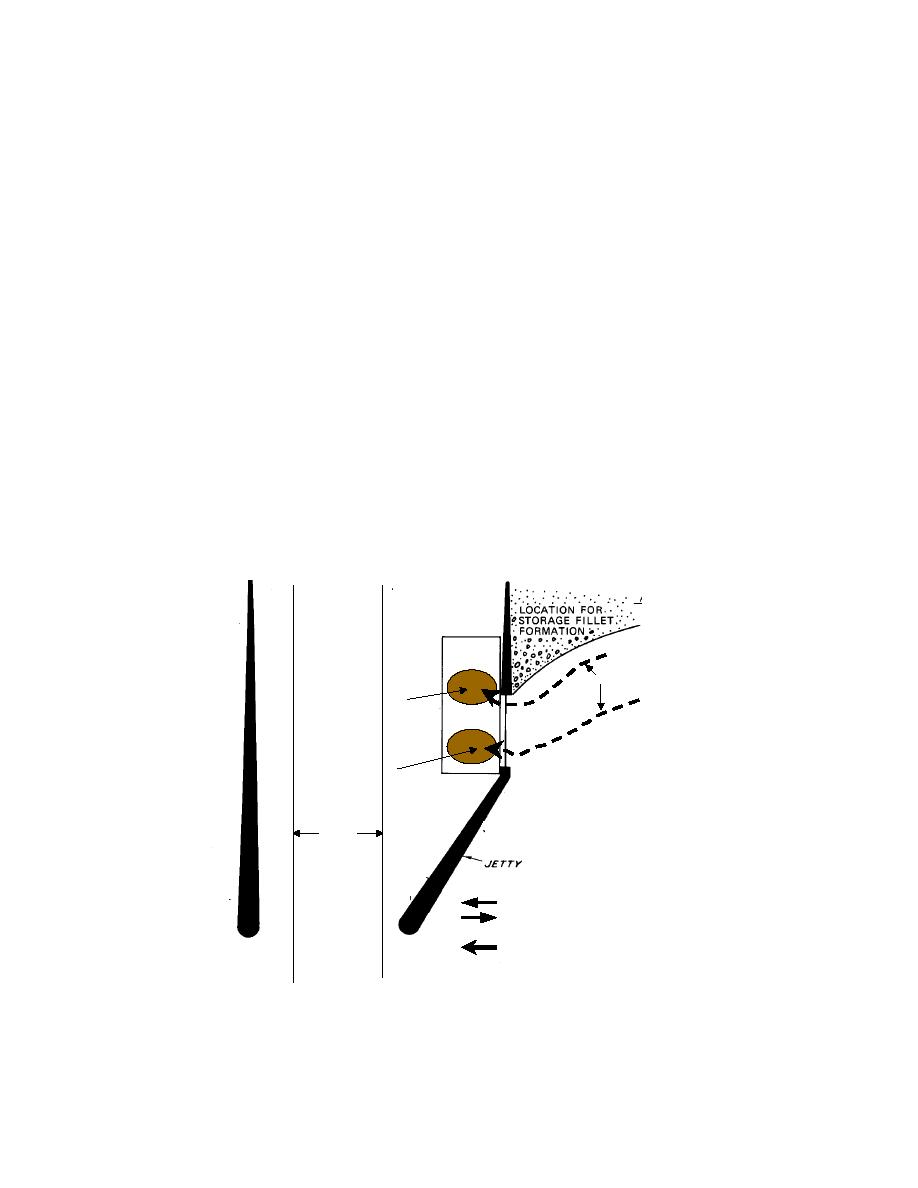
January 13, 2004
14:36
WSPC/101-CEJ
00094
549
Progress in Management of Sediment Bypassing at Coastal Inlets
revetment wall can be constructed at the back of the basin for confinement. Problems
with a confining wall may relate to potential scour if a wall terminates adjacent to
the navigation channel, and it could also be a hazard to navigation.
Deposition basin size is usually based on how often dredging can be scheduled
and the estimated longshore sediment transport rate. The optimal design of a basin
and associated structures is intended to capture the net longshore transport volume,
as described below. (Such capture of sediment assumes the basin is placed on the
side of the inlet where the greater amount of longshore sediment volume originates.)
Capturing only the net longshore transport volume will facilitate reduced sediment
handling. The recommended procedure is to design for some amount greater than
the yearly net, but less than the yearly transport directed toward the basin. This
value may then be doubled to provide reserve if, for some reason, a dredging cycle
is missed. Ways to achieve capture of only the net transport are described in the
next section.
3.2.2. Design with respect to net long-shore sediment transport
Ideally, a weir jetty system should provide a deposition basin that can contain one to
two years of the net longshore transport. In order to capture only the net longshore
transport rather than the total right-to-left transport (use Fig. 11 as a reference), the
Deposition
Basin
Sediment pathways
Low wave energy
deposition
High wave energy
deposition
Channel
QL= Longshore transport to left
QR= Longshore transport to right
QN= Net longshore transport
= QL- QR (for this example, QL>QR)
Fig. 11. Sediment pathways over weir for low and high wave conditions.
Figure 11. Sediment pathways over weir for low and high wave conditions.



 Previous Page
Previous Page
